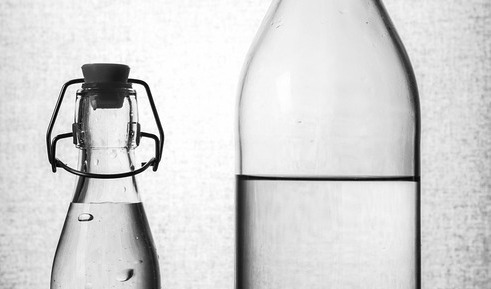In a world where innovation and sustainability are becoming increasingly important, packaging materials play a crucial role. One of the most fascinating developments in this field is biophotonic glass, a technology that goes beyond the traditional use of glass as a storage material. But what makes biophotonic glass so special? And why is it a gamechanger in the world of packaging?
What is biophotonic glass?
Biophotonic glass, also known as Miron glass, is a special type of glass designed to enhance the shelf life and quality of natural products. The glass is dark purple to nearly black in color and has unique light-filtering properties. Unlike regular glass, which allows all types of light to pass through, biophotonic glass permits only certain wavelengths of light, such as ultraviolet (UV), violet, and infrared light. These specific wavelengths have a positive effect on the chemical stability of the products stored within the glass.
How does it work?
The functionality of biophotonic glass is based on the interaction between light and matter. Regular glass allows visible light to pass through, which can lead to oxidation and degradation of the contents. This is particularly problematic for products like oils, herbs, and cosmetics, which are sensitive to light. Biophotonic glass, on the other hand, blocks harmful visible light and allows only specific wavelengths to pass through, protecting and even enhancing the molecular structure of the contents.
An example of this is the storage of oils in biophotonic glass. Oils are particularly prone to oxidation, a process that reduces their quality and effectiveness. By storing oils in biophotonic glass, oxidation is slowed down, keeping the oils fresher for longer. This makes biophotonic glass an ideal choice for products like essential oils, which are often used in small quantities and need to be stored for extended periods.
The science behind light filtering
The unique properties of biophotonic glass stem from the way it filters light. The glass is designed to block visible light (with the exception of violet light) while allowing UV and infrared light to pass through. UV light has antimicrobial properties and can help inhibit bacteria and fungi, while infrared light can stimulate molecular activity in the contents. This combination ensures that products are not only protected but may even improve in quality during storage.
An interesting experiment illustrating this involves storing grapes in biophotonic glass versus regular glass. After several days, the grapes stored in biophotonic glass were found to be fresher and more flavorful than those stored in regular glass. This demonstrates that the light-filtering properties of the glass have a direct impact on the quality of natural products.
Why Is biophotonic glass relevant for technology and innovation?
While biophotonic glass may initially seem like a niche product, it has broad implications for technology and innovation. It exemplifies how science and technology can be used to support, rather than disrupt, natural processes. By leveraging the unique properties of light, biophotonic glass offers a sustainable solution to an age-old problem: how do we preserve natural products in a way that maintains their quality?
Additionally, biophotonic glass aligns with the growing trend of sustainability in packaging. The glass is fully recyclable and reusable, making it an eco-friendly alternative to plastic and other non-sustainable packaging materials. This is particularly important at a time when consumers are placing increasing value on environmentally friendly products and packaging.
Practical applications
The applications of biophotonic glass are diverse and rapidly expanding. It is already being used as a
water bottle, in the food industry to store herbs, spices, and oils, as well as in the cosmetics industry for packaging creams, serums, and other sensitive products. Furthermore, the glass is becoming increasingly popular in the pharmaceutical industry, where it is used to protect medicines and supplements from degradation.
One particularly interesting application is the storage of essential oils, which are often sold in small quantities and are sensitive to light and oxidation. By storing these oils in oil glass, they remain effective for longer and retain their therapeutic properties. This makes the glass not only a practical choice but also a valuable investment for both producers and consumers.
The future of biophotonic glass
The rise of biophotonic glass marks an important step in the evolution of packaging materials. It combines science, technology, and sustainability in a way that not only enhances the quality of products but also contributes to a greener future. As the technology continues to develop, we can expect biophotonic glass to play an increasingly significant role across various industries.
For tech enthusiasts and innovators, biophotonic glass offers a fascinating example of how technology can be used to support natural processes. It serves as a reminder that innovation is not always about creating something entirely new but also about improving existing solutions by harnessing the power of science and nature.


